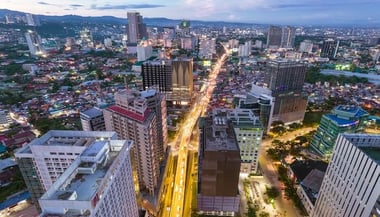The Financial Action Task Force (FATF), the intergovernmental body formed in 1989 to combating money laundering, is celebrating its 30th anniversary this year. Since its inception, the global agency played a key role in identifying and preventing the financial crime by setting standards and promoting effective implementation of legal, regulatory and operational measures. Today, FATF is regarded as the global anti-money laundering watchdog and its policies are highly regarded and treated as law by members and many non-members. The article attempts to highlight some important information about the organization.
Origin
- The FATF was established in July 1989 by the G7 Summit at the Arche de la Defense in France as part of the group’s efforts to curb drug trafficking. The task force was convened from the G-7 member States, the European Commission and eight other countries.
- The Economic Declaration from that G-7 Summit states that the task force is convened “to assess the results of cooperation already undertaken in order to prevent the utilization of the banking system and financial institutions for the purpose of money laundering, and to consider additional preventive efforts in this field, including the adaptation of the legal and regulatory systems so as to enhance multilateral judicial assistance”.
- The task force is headquartered in Paris and has two official languages: English and French. It also has a French name: Groupe d'action financière (GAFI).
Standards
- In April 1990, the FATF issued a report with Forty Recommendations intended to provide a comprehensive plan of action to combat money laundering.
- In 2001, the task force added terrorist financing as a focus point, following the September 11 attacks and issued the Eight Special Recommendations in the fight against terrorist financing.
- The FATF revised its AML standards comprehensively in 2003, 2004 and 2012 to address new and evolving money laundering techniques with new tools and deal with new threats such as arms trafficking and corruption. In October 2004 the FATF published a Ninth Special Recommendations on terrorist financing which were later fully integrated with the measures against money laundering.
Membership
- Members in the organization increased from its original 16 to 28 during 1991 and 1992 In 2000, the FATF expanded to 31 members and has since added other countries to reach its current tally of 39 members – 37 jurisdictions and 2 regional organizations (the Gulf Cooperation Council and the European Commission).
- The FATF evaluates countries based on set criteria before accepting them as members. Quantitative criteria include size of GDP, size of the banking, insurance and securities sectors and population. Qualitative indicators include impact on the global financial system, Active participation in an FSRB and regional prominence in AML/CFT efforts, Level of commitment to AML/CFT efforts and level of AML/CFT risks faced and efforts to combat those risks. Other considerations include level of adherence to financial sector standards and participation in other relevant international organizations.
- The organization has nine regional AML/CFT bodies as associate members. They are Asia/Pacific Group on Money Laundering (APG), Caribbean Financial Action Task Force (CFATF), Council of Europe Committee of Experts on the Evaluation of Anti-Money Laundering Measures and the Financing of Terrorism (MONEYVAL), Eurasian Group (EAG), Eastern and Southern Africa Anti-Money Laundering Group (ESAAMLG), Financial Action Task Force of Latin America (GAFILAT), Inter Governmental Action Group against Money Laundering in West Africa (GIABA), Middle East and North Africa Financial Action Task Force (MENAFATF) and Task Force on Money Laundering in Central Africa (GABAC).
Structure
- The FATF is led by a President, who is a high-ranking government official from one of the member countries and is responsible for convening and chairing the meetings of the plenary and overseeing the FATF Secretariat. The term of the President begins on 1 July and ends on 30 June of the following year.
- The President is assisted by the Vice-President, who will be appointed from among the members for a term of two years, and an Executive Secretary.
- Currently, Xiangmin Liu (China), Marcus Pleyer (Germany) and David Lewis (UK) are serving as President, Vice-President and Executive Secretary of the FATF, respectively.
Work
- The intergovernmental organization explains that its objectives are “to set standards and promote effective implementation of legal, regulatory and operational measures for combating money laundering, terrorist financing and other related threats to the integrity of the international financial system”.
- It promotes the global adoption and implementation of its AML/CFT recommendations and monitors progress in implementing recommendations by the FATF network that currently includes 205 jurisdictions.
- It monitors progress in implementing recommendations through "peer reviews" of member countries.
- FATF started issuing a list of "Non-Cooperative Countries or Territories" (NCCTs), commonly called the FATF Blacklist, in 2000. This list includes jurisdictions which the FATF believes were uncooperative with other jurisdictions in international efforts against money laundering and terrorism financing.
Taking its birth form G-7 summit declaration, the FATF is currently the widely respected AML watchdog across the globe. The FATF standards, tools and recommendations have helped many countries investigate money laundering crimes and prosecute the wrongdoers. With its noteworthy actions in policymaking, promoting AML standards and progress monitoring, the FATF has rightfully earned its title as the protector of the global financial system.
Anti-Financial Crime Compliance with Tookitaki?



